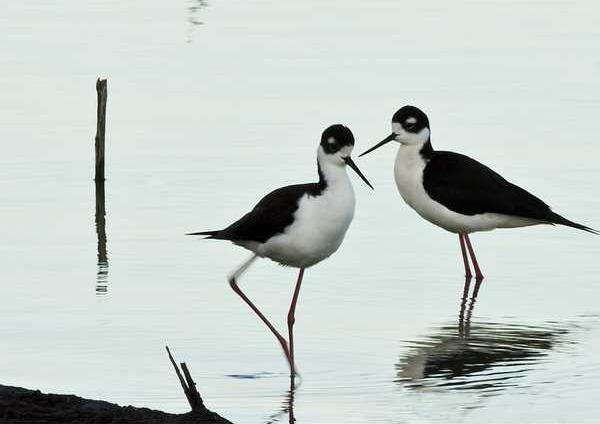By Eric Giesing and Dr. Dan Witt
February. The time of the year when we romantically pour out our undying love and affection towards our significant other with flowers, chocolates, and other gifts on Valentine’s Day. Ironically, February seems like a complete contradiction to romanticism, sporting a barren landscape, dead flowers, leafless trees, and a temperature that is usually cold as the dickens. In fact, most animals have even bailed ship in hopes of finding a warmer locale or have buried themselves underground to ride out the rest of winter. Somehow though, Valentine’s Day does seem to inspire romance, no matter how you approach it.
Valentine’s Day is difficult to miss regardless of your relationship status. Hoards of flowers, chocolates, and red and pink, heart shaped things spill off store shelves. So each year we are faced with the ever looming question: How will you spend Valentine’s Day this year? It may surprise you, but your plans may have been similar to those of some animals at the Bottoms.
If you are in a committed relationship, your Valentine’s Day celebration may have consisted of a romantic candlelight dinner, a night of dancing or a dreamy movie. Or maybe you stayed at home for a quiet evening without the kids and enjoyed some couple time. If you still managed to fail at making memorable plans for your significant other this Valentine’s Day season, you may look for inspiration next year from the romantic, family man known as the prairie vole. The prairie vole huddles and grooms its mate, shares parenting responsibilities, is loyal, and supports its mate, leaving all women, at one point or another, wishing they had a rodent for a spouse. So next time try bringing home dinner, drawing up a bubble bath, helping your spouse with the kids or just cuddling in for the night under a blanket.
Monogamy as a whole is far more common though in birds than mammals in the animal kingdom. Perhaps the biggest romantic of bird species is the
American blue goose who rarely takes a new mate if something happens to their first. Males of the species also let their females eat first and only eat after they have had their fill. Who says chivalry is dead? Several monogamous species are found at the Bottoms as well, including bald eagles, sandhill cranes, bam owls, and the infamous symbol oflove: swans.
What if monogamy is not for you or you have yet to find that special someone. Your Valentine’s Day may have been spent bar hopping or prowling for new mates instead of a quiet night at home. If so, you and the greater prairie chicken, another critter around the Bottoms, have a lot in common. You start your night by primping in front of the mirror before hitting the town. You flex your muscles and strut your stuff on the dance floor, trying to gain the attention of a suitable partner. Similarly, males of greater prairie chickens go to areas with great visibility, inflate their air sacs creating a booming sound, and show off amongst other males, often resulting in fights, with the hopes of attracting the attention of a female who wanders through. Here’s to hoping that your search for a mate is less dramatic than that of the prairie chicken!
No matter how you chose to spend Valentine’s Day, we hope you had a memorable time. Just don’t forget to do something special for the one you love, whether it’s fixing a home-cooked meal or catching a mouse, tidying up the house or nest, taking care of the kids or chicks, or simply shaking your tail feather! Until next time!
Eric Giesing is the Director of Education for FHSU at the KWEC and Dr. Dan Witt is a retired MD. and nature photographer/enthusiast.
Marsh Musings

